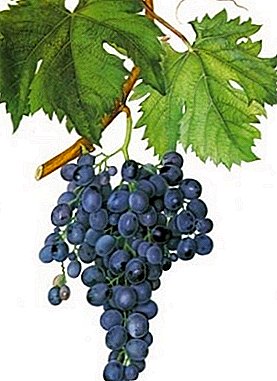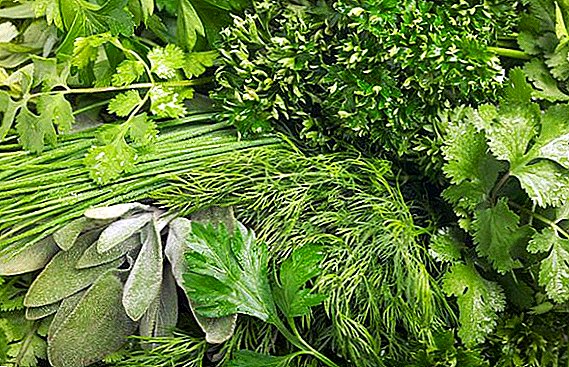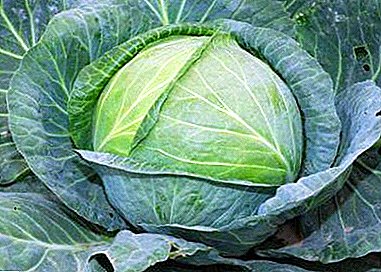
Grape varieties related to nutmeg, usually have a light colored berries. The exception is Muscat Hamburg.
Its berries are painted in a rich blue color, with a slight red or purple hue. It has one more feature. It does not belong to either technical varieties or dining. Noting the high quality of the fruits of Muscat of Hamburg both for preparing wines and for serving directly to the table, these grapes were called universal.
Alexander, Krasa Balka and Druzhba also belong to the universal varieties.
Inference history
A variety appeared in the greenhouses of Victorian England and was first described in 1858. Seward Snow, a gardener from the estate of Earl Gray, described that Muscat of Hamburg originated from crossing Hamburg black grapes (an old synonym for Schiav Gross) with White Alexandria Muscat. A DNA analysis carried out in 2003 confirmed this information.
In the West, the variety is better known under the name Black Muscat, although it has a dozen or two more synonyms. In the USA it is called Golden Hamburg, in France - Muscat de Hamburg. In the countries of the former USSR, besides the name Muscat of Hamburg, along with the American and French synonyms, the name Muscat is black Alexandrian.
Description variety Muscat Hamburg
 The grape bush is of medium height. Cultivation on more fertile soils contributes to the development of the vine with a height above average.
The grape bush is of medium height. Cultivation on more fertile soils contributes to the development of the vine with a height above average.
Medium varieties include Dasha, Ladanny and Kishmish Jupiter.
The degree of maturation of the shoots is not bad, but with a lack of heat and in conditions of high humidity it worsens.
Young vine - light pink color with dense pubescence. Ripened stems - brown, with characteristic red nodes.
The degree of leafiness shoots high.
Foliage size is medium or large. Form - five-lobed, heart-shaped. There is a large waviness on the edge of the sheet.
The pubescence of the lower surface of the foliage is abundant;
The leaf is painted in a bright green color, with a reddish border around the edge of the teeth. Sometimes on the foliage there are patches of brownish spots.
The flowers of the grapes are bisexual, but the degree of pollination is low.
The Count Monte Cristo, Malbec and the Black Crow also possess bisexual flowers.
Characteristic of fruits:
The presence of a specific aroma, reminiscent of musk - a distinctive feature of varieties related to nutmeg. By this criterion, Muscat of Hamburg is considered to be the standard, this sign is so strongly expressed in it. For fruit varieties characteristic:
- clusters of medium size, rarely exceeding the length of 18-19 cm;
- branched and winged forms of loose bunches with a short leg (about 5 cm);
- small mass of bunches (from 160 to 270 g);
- the size of the berries varies greatly, with a predominance of large ones, up to 25-26 cm long;
- the shape of the berry is round or slightly oval, the color is violet, with a bluish wax coating;
- fruits are characterized by low seed, rarely more than 2-3 pieces;
- juicy and fleshy fruits are covered with dense skin.
A photo
Photo grapes "Muscat Hamburg":





Pros and cons of grapes
"Minuses" Of the shortcomings of the variety there is an increased fragility of the ridge, the tendency of the berries to fall and pea, unstable yields.
"Pros" Important advantages are excellent transportability and safety, excellent taste in fresh and canned form.
Great taste can boast and Russian Early, Victoria, Tukay.
Recommendations for growing
 The low ability to tolerate winter temperatures does not allow growing Muscat Hamburg in areas with frosty winters.
The low ability to tolerate winter temperatures does not allow growing Muscat Hamburg in areas with frosty winters.
The minimum temperature that grapes can withstand - 19 degrees. The variety works out well on the slopes of the southern and south-western orientation, prefers light loam or sandy loam, and can even put up with sandy soils.
The distance between the rows of the vineyard is preferably done at least 2.3 meters. In a row of bushes have a distance of one and a half meters from each other. The best result is the formation of the vine on the two shoulders of the cordon type: the height of the trunk is 1.2 meters.
Permissible and bezshtambovoe fan cultivation of the variety. The recommended load on the bush - no more than 20 shoots, of which from half to 3/4 will be fruitful. Pruned shoots short, focusing on their degree of preservation after overwintering.
 Based on the length of the growing season (about 150 days), grapes are classified as medium-late varieties. Harvest maturity occurs in the second half of September.
Based on the length of the growing season (about 150 days), grapes are classified as medium-late varieties. Harvest maturity occurs in the second half of September.
Diseases and pests
Muscat Hamburg unstable to major diseases of the vine. It is strongly affected by mildew and oidium, prone to gray rot.
As a result, several proactive treatments for these diseases are required during the season. It is also noted instability against bacterial cancer and phylloxera.
The difficulties in cultivating this variety more than overlap with its highest consumer qualities. He has no equal among the technical varieties.
Even a small addition of this grape to less valuable varieties makes it possible to obtain high-quality wine from it. Features of the grapes as a table variety allowed him to take a leadership position in this category.












